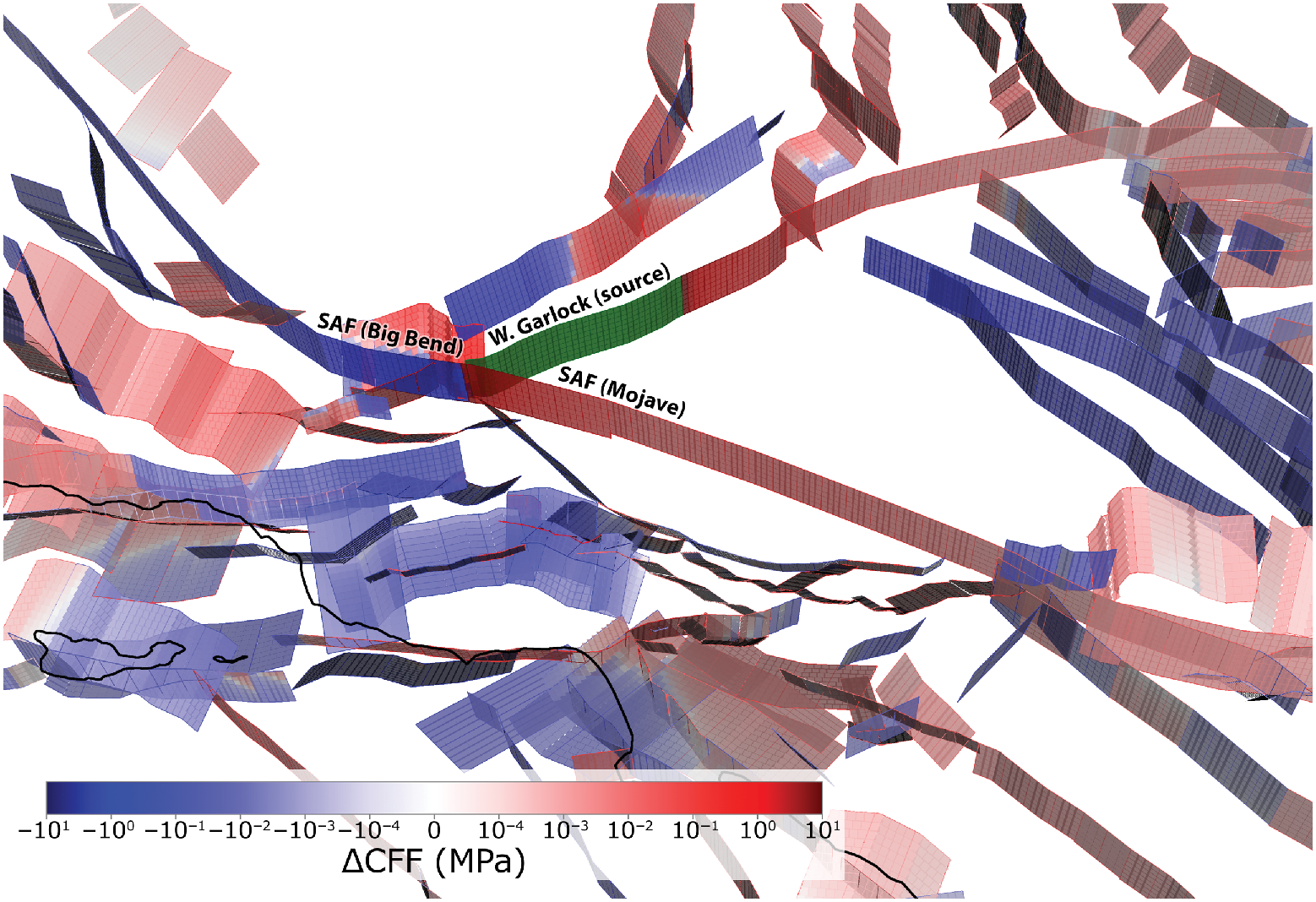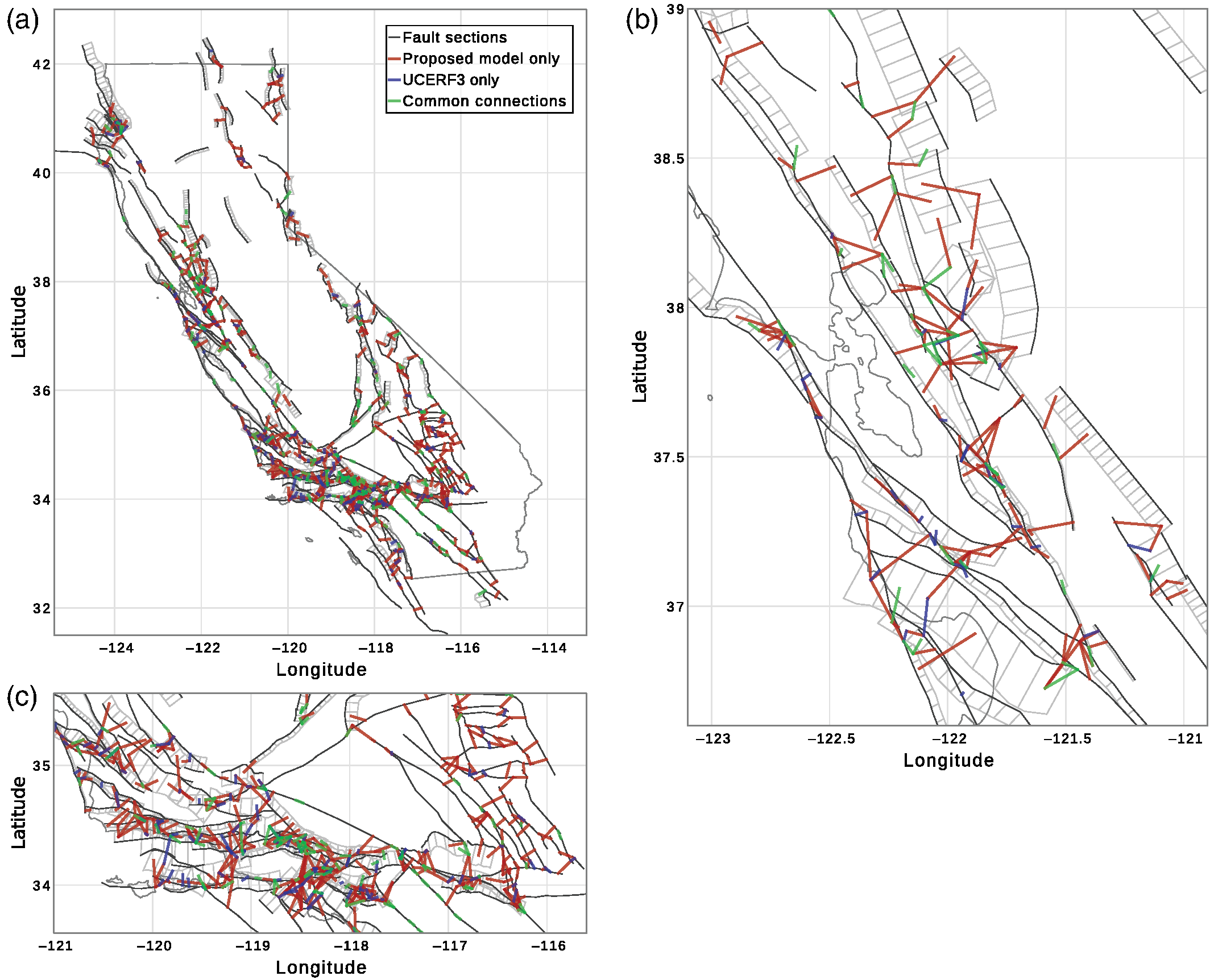Multifault Rupture Plausibility paper published in Bulletin of the Seismological Society of America
Our paper entitled “Enumerating Plausible Multifault Ruptures in Complex Fault Systems with Physical Constraints” was just published in Bulletin of the Seismological Society of America. Give it read here, or see the abstract and selected figures below.
Kevin R. Milner, Bruce E. Shaw, Edward H. Field; Enumerating Plausible Multifault Ruptures in Complex Fault Systems with Physical Constraints. Bulletin of the Seismological Society of America 2022;; 112 (4): 1806–1824. doi: https://doi.org/10.1785/0120210322
Abstract
We propose a new model for determining the set of plausible multifault ruptures in an interconnected fault system. We improve upon the rules used in the Third Uniform California Earthquake Rupture Forecast (UCERF3) to increase connectivity and the physical consistency of ruptures. We replace UCERF3’s simple azimuth change rules with new Coulomb favorability metrics and increase the maximum jump distance to 15 km. Although the UCERF3 rules were appropriate for faults with similar rakes, the Coulomb calculations used here inherently encode preferred orientations between faults with different rakes. Our new rules are designed to be insensitive to discretization details and are generally more permissive than their UCERF3 counterparts; they allow more than twice the connectivity compared with UCERF3, yet heavily penalize long ruptures that take multiple improbable jumps. The set of all possible multifault ruptures in the California fault system is nearly infinite, but our model produces a tractable set of 326,707 ruptures (a modest 29% increase over UCERF3, despite the greatly increased connectivity). Inclusion in the rupture set does not dictate that a rupture receives a significant rate in the final model; rupture rates are subsequently determined by data constraints used in an inversion. We describe the rupture building algorithm and its components in detail and provide comparisons with ruptures generated by a physics‐based multicycle earthquake simulator. We find that greater than twice as many ruptures generated by the simulator violate the UCERF3 rules than violate our proposed model.

Figure 1 Three‐dimensional view looking north of fault model 3.1 from the Third Uniform California Earthquake Rupture Forecast (UCERF3) model broken up into 2 km × 2 km patches for Coulomb calculations. Patches overlap slightly to fill the fault surfaces completely. In this example, eight subsections of the Garlock fault are used as sources (green) with 1 m displacement and Coulomb stress changes (ΔCFF) are computed to all other patches (with contributions summed across all source patches). Receiver patches are colored by their sign with darker colors indicating greater amplitude, and subsection outlines are colored by the sum across all receiver patches (red is positive, blue negative). This shows the Coulomb‐preferred corupture direction of the left‐lateral Garlock fault connecting to the Mojave section of the right‐lateral San Andreas fault (SAF). Coastlines are overlaid in black.

Figure 16 Allowed fault‐to‐fault connection points in the UCERF3 and proposed models, drawn between the middles of the connected subsections. (a) Entire model region, (b) zoom in on the bay area, and (c) zoom in on southern California and the eastern California shear zone. Connections that are unique to the proposed model are drawn in red, unique to UCERF3 drawn in blue, and common to both models drawn in green. Changes in the connection strategy can result in different connection points between the same pair of faults between the two models, and the modified plausibility filters and increased jump distance result in many more connections (776) in the proposed model than were allowed in UCERF3 (369).
